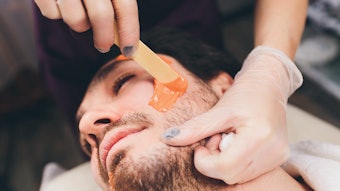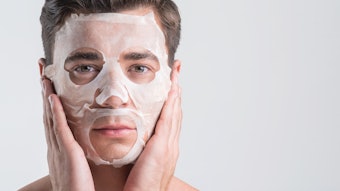
Editor’s note: This article is the first part of a three-part series about how cancer affects the skin. The next two parts will appear in the April and May 2012 issues, respectively. Skin care professionals must seek specialized training before offering the services addressed in this series.
Sue was one of our spa’s first “special guests,” a woman with cancer. She was 55 and had been diagnosed with metastatic breast cancer; cancer that had spread beyond the breast and was controllable but not curable. Like Sue, more people are being diagnosed with—and are surviving—cancer than ever before. According to the American Cancer Society, a staggering 11.7 million Americans alive today have a history of cancer; some are cancer-free, some still have evidence of cancer and some are currently undergoing treatment. It is estimated that more than 1.6 million new cases will be diagnosed in 2012 alone, and that 68% of all people diagnosed with cancer will survive five or more years.
These people often become clients in spas, or want to receive the restorative services that spas offer. Skin care professionals need to become familiar with the changes to the skin that result from cancer treatment so they can become more skilled in providing services to these clients. This three-part series presents an overview of skin changes related to cancer treatment and recommendations for skin care that will aid these particularly vulnerable clients to be most comfortable with their own beauty.
Cancer
Every cancer is a disease in which cells have undergone changes making them resistant to the usual constraints of normal growth and development. Particularly devastating is the loss of boundaries allowing cancer to start in one organ and spread to others. This is called metastasis, and metastatic disease is often the reason people die of cancer. To illustrate how important this is, consider a woman with breast cancer. If it wasn’t for the ability of cancer to metastasize to vital organs, such as the liver, lungs or brain, no one would die of breast cancer. A woman can live without a breast, or without both breasts, but she cannot live when cancer destroys the liver, lungs or brain.
Medical treatment for cancer usually involves surgery, radiation therapy and/or chemotherapy. These treatments are most often used in combination to stop the cancer growth where the tumor is and in distant places where it may metastasize. The effects on the skin can be harsh.
- Surgery. This breaks the integrity of the skin, weakens the first barrier the body has to infection and alters the appearance.
- Radiation therapy. The high energy x-rays used for radiation therapy damage all layers of the skin in the treatment area. See Skin Care Recommendations for Clients Undergoing Radiation.
- Chemotherapy. The medications used in chemotherapy are given by vein or as a pill, and travel via the blood throughout the body. They may cause discoloration, bruising, infection, itchiness, increased sensitivity to sunlight, dryness, peeling or acnelike rashes.
The complexity of these treatments makes it easy to forget the individual whose life is deeply affected.
A special guest
At Ahava Spa and Wellness Center in Toledo, Ohio, the spa’s team does not lose sight of the person with cancer. It is a day spa offering all spa services and, embedded in the day spa is the ministry of offering a spa day to special guests; that is, anyone undergoing treatment for cancer or who has completed treatment in the past 12 months. Ahava, Hebrew for “cherished one,” has cared for almost 800 special guests throughout more than seven years. This experience has solidified the belief that dehydration is one of the most common and critical skin problems for those with cancer.
Sue, the special guest mentioned at the beginning of this article, came to the spa tired of sharing her body with the medical community. She eagerly anticipated her complimentary day of rest and relaxation. Her care, as is the care for all of our special guests, occurred in four stages: the initial assessment and analysis, the preparation and approach to the treatment area, the treatment itself and the evaluation.
1. Initial assessment and analysis. The first thing noted during the initial assessment was the severe effect of dehydration as a result of her long medical treatment plan, which included surgery, radiation therapy and chemotherapy. Sue told us she always had great skin, but a combination of poor appetite, nausea and vomiting, decreased fluid intake and stress resulted in dehydration that showed in her thinning, wrinkled and grayish skin. Bald, without eyebrows or eyelashes, and now with her great skin compromised, she looked tired and defeated. She was aging rapidly.
2. Preparation and approach. Compassion and touch are essential ingredients to the care of Ahava’s special guests. Recommendations in caring for these clients include the following.
- Acknowledge the clients’ cancer—and yes, use the word “cancer.” Although cancer should not be the only topic discussed, recognizing and being up front with the elephant in the room is helpful in putting the clients at ease.
- Inquire about any pain they may be experiencing at the time. This will help direct the care to be the most comfortable for clients.
- Ask how they hope to benefit from their spa services. What are their goals for these treatments? What are they looking forward to?
- Remember to look beyond the particular service or cancer diagnosis, and see the whole person.
Based on the information learned through your initial assessment and analysis, it is important to prepare the treatment room with gentle touches. These include taking special care that the linens, scents and music are peaceful. Aromatherapy, using sweet orange or grapefruit to decrease nausea and lift the client’s mood, is often used. Try placing one drop of sweet orange or grapefruit essential oil in enough water for about 10 towels to absorb to create warm towels for the face. Also, aromatherapy can be incorporated by placing 1/2 drop across the headrest of the treatment bed, allowing clients to smell the scent, but avoiding applying it directly on their skin. In both recommendations, the scents should be very diluted, and sweet orange and grapefruit are ideal because they are light and decrease nausea. It is important that the client avoid direct contact with overwhelming scents. See Aromatherapy Tips for Clients With Cancer for more about using aromatherapy with cancer patients.
Because the skin is the largest organ in the body, it has an almost-endless absorption capability. To capitalize on this, Ahava uses an organic product line with vitamins and antioxidants to supplement the skin’s nutrition. The enzymes and exfoliants used are mild. Massage helps to stimulate blood flow and remove toxins. Remember, the type of massage used on clients with cancer should be light to moderate relaxation massage; no deep tissue and no stones should be used. All of the massage therapists working at Ahava are cancer-certified, and it is very important that all skin care professionals who come in contact with cancer clientele have been trained to work with this fragile client type. Straight antioxidants, such as teas, are incorporated in order to help revitalize the skin.
3. Treatment. Following was Sue’s facial treatment recommendation, using the organic product line with vitamins and antioxidants as mentioned previously.
- Cleanse with steam to loosen dry, dead skin.
- Exfoliate using a mild enzyme.
- Remove exfoliant with alternating warm towels and teas to help return strength and elasticity to the skin.
- Massage to stimulate blood flow to help the healing process. Again, massage should be light to moderate relaxation massage. Take care with painful areas. For example, if the client has a port in the chest area, avoid it because it is often tender.
- For ultra-hydration, apply a thin layer of vitamin C serum before applying infused paraffin.
- After the removal of the paraffin, apply finishing serums and moisturizers to support skin renewal.
4. Evaluation. Sue’s results far exceeded expectations. That grayish cast was replaced with a glow of nourished skin that helped remind her of what life could be again. At the completion of Sue’s treatment, the mind-body-spirit connection was clearly evident and restored. Not only were there visible changes on her skin, but she was also reminded of her own importance. She was encouraged to be gentle with herself, and let her mind and spirit work with her body to heal. See Touch and the Client With Cancer for more information about using the proper touch with these clients.
Tender love and care
Dehydration is a significant problem for those being treated for cancer and for many after cancer treatment concludes. Medical treatments can be hard on the skin, and moisture is lost because of their side effects. Skin care services must include a recommendation to gently replenish the lost fluids.
Another important message for working with cancer clients is touch. Although the well person may take touch for granted, it can be painfully lacking for a person with cancer. In a letter from Sue after her day at the spa, she wrote: “The relief I felt after my spa day was two-fold. The massage reminded me that I need to still let people touch me. I had started to pull away because most touches aren’t good right now. Also, my skin was such a mess; I just thought that was how I was going to look now. Thank you for the tender love and care!”
In part II of this series, which will appear in the April 2012 issue of Skin Inc. magazine, the sensations and sensory changes of the client with cancer will be covered.
Patricia Ringos Beach is a nurse, speaker and author with advanced certification in oncology and palliative care. In Toledo, Ohio, she works as a patient navigator and clinical nurse specialist.
Katie Morgan-Lousky is the owner of Ahava Spa and Wellness Center in Toledo, Ohio. She also founded Cherished Friends of Ahava, a ministry where cancer patients can receive spa services with sensitivity to their vulnerability and special needs. The authors can be contacted at [email protected].










